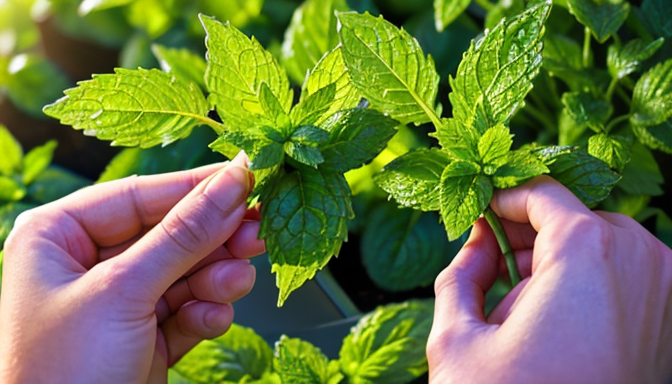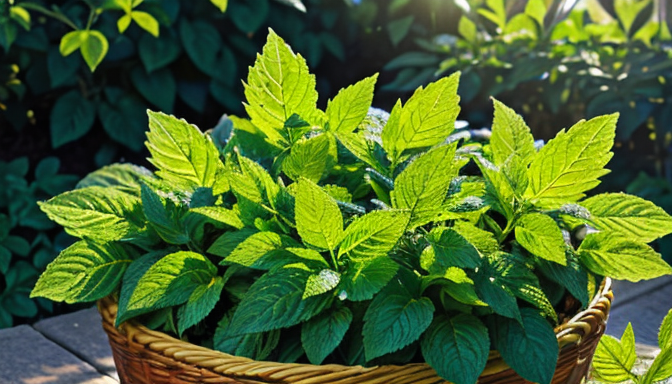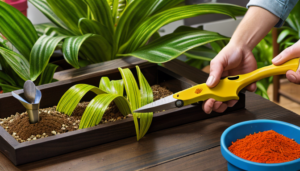When it comes to , timing is everything. The best time to pluck those vibrant green leaves is in the early morning, just after the dew has evaporated but before the sun is high in the sky. This is the moment when the essential oils in the mint are at their most potent, ensuring a burst of freshness and flavor in every leaf.
For those looking to master the art of proper harvesting techniques, using the right tools is crucial. Opt for sharp scissors or pruning shears to snip the mint stems just above a leaf node. By doing so, you not only encourage new growth but also help the plant stay healthy for future harvests, ensuring a steady supply of aromatic leaves.

Once you’ve gathered your bounty, it’s time to think about drying and storing methods to preserve that delightful minty essence. Hanging the mint stems upside down in a dark, well-ventilated space is ideal for drying. Once dried, store the leaves in an airtight container, shielded from both light and heat, to maintain their flavor and aroma.
When it comes to preserving the flavor of mint leaves for culinary use, there are a couple of tricks up our sleeves. To unleash the full potential of the leaves, consider crushing them just before incorporating them into your favorite recipes. Alternatively, freeze the mint leaves in ice cube trays with water or oil for a convenient and flavorful addition to your dishes.

Best Time to Harvest Mint
When it comes to harvesting mint leaves for maximum flavor, timing is key. The is in the morning, just after the dew has dried but before the sun is at its peak. This is when the essential oils in the leaves are most concentrated, ensuring a burst of flavor in your culinary creations.
For those looking to get the most out of their mint plants, using proper harvesting techniques is essential. Utilize sharp scissors or pruning shears to cut mint stems just above a leaf node. By doing so, you not only encourage new growth but also help the plant stay healthy for future harvests.
After harvesting, it’s crucial to properly dry and store the mint leaves. Hang the mint stems upside down in a dark, well-ventilated area to dry them effectively. Once dried, store the leaves in an airtight container, away from light and heat, to preserve their flavor for an extended period.
When it comes to preserving the flavor of mint leaves for culinary use, there are a few tricks to keep in mind. To retain maximum flavor, consider crushing the mint leaves just before using them in your recipes. Alternatively, freeze the leaves in ice cube trays with water or oil for convenient and easy additions to your dishes.

Proper Harvesting Techniques
When it comes to harvesting mint leaves, using proper techniques is essential to ensure the plant’s health and maximize flavor. Here are some key tips to follow:
- Harvest mint stems in the morning when the oils are most concentrated for the best flavor.
- Use sharp scissors or pruning shears to cut stems just above a leaf node to promote new growth.
- Avoid overharvesting by leaving some leaves on the plant for continued growth.
- Regularly prune mint to prevent it from becoming woody and to encourage a bushier growth habit.

Drying and Storing Methods
When it comes to drying and storing mint leaves, there are specific methods that can help preserve their flavor and aroma for an extended period. One effective technique is to hang mint stems upside down in a dark and well-ventilated area. This allows the leaves to dry naturally while maintaining their essential oils and flavors. By drying the mint in this manner, you can ensure that the leaves retain their maximum flavor profile.
Once the mint leaves are completely dried, it is crucial to store them properly to prevent flavor loss. Storing dried mint leaves in an airtight container is essential to protect them from exposure to light and heat, which can degrade their quality over time. By keeping the leaves in a cool, dark place, you can prolong their shelf life and maintain their freshness.

Preserving Flavor for Culinary Use
To preserve the fresh flavor of mint leaves for culinary use, there are several effective methods that can be employed. One popular technique is to crush the mint leaves just before incorporating them into recipes. This releases the essential oils and intensifies the flavor, enhancing the overall taste of the dish. Another creative way to preserve mint leaves is by freezing them in ice cube trays with water or oil. This not only keeps the leaves fresh but also provides a convenient way to add a burst of minty freshness to various dishes. By utilizing these preservation methods, you can ensure that the flavor of mint leaves is maximized in your culinary creations.
Frequently Asked Questions
- When is the best time to harvest mint leaves?
The best time to harvest mint leaves is in the morning after the dew has dried but before the sun is at its peak. This is when the oils are most concentrated, providing the best flavor.
- What are the proper harvesting techniques for mint?
Use sharp scissors or pruning shears to cut mint stems just above a leaf node. This encourages new growth and ensures the plant remains healthy for future harvests.
- How should mint leaves be dried and stored?
Hang mint stems upside down in a dark, well-ventilated area to dry. Once dried, store the leaves in an airtight container away from light and heat to preserve flavor.
- What is the best way to preserve mint flavor for culinary use?
To retain maximum flavor, crush mint leaves just before using them in recipes. Alternatively, freeze mint leaves in ice cube trays with water or oil for easy addition to dishes.
- Unraveling the Mystery of Yellowing Snake Plants - May 16, 2024
- Troubleshooting Yellowing Citronella Plants - May 16, 2024
- Troubleshooting: Elephant Ear Plant Turning Yellow - May 16, 2024







